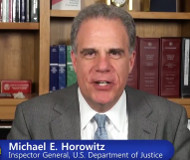4/5/2017
US Justice Department Report Questions Motive Behind Auto SeizuresInspector general report finds federal seizure of vehicles and cash are rarely connected with criminal convictions.

Are police departments around the country using automobile seizure laws to pad local budgets? That was a question raised last week the US Department of Justice (DOJ) inspector general's review of operations under the federal asset forfeiture program, which has generated $28 billion over ten years.
The Federal Bureau of Investigation, Bureau of Alcohol Tobacco and Firearms and the Drug Enforcement Agency (DEA) are the main players in the federal seizure of assets such as cash, jewelry, vehicles, houses and other property. The DEA alone is responsible for 80 percent of cash seizures, collecting $4.1 billion in the last ten years. Of that amount, a mere $78.9 million went back to victims or legitimate property owners. The new report focuses on these cash seizures, but the document describes how Bal Harbour, Florida's police department used forfeiture to grab $48 million and pocket $6 million for the department from automobile and other property, even though nobody involved was ever prosecuted.
"Such outcomes can raise questions about whether seizures are intended to serve legitimate law enforcement interests or to bolster law enforcement budgets," inspector general Michael E. Horowitz noted.
According to the inspector general's analysis, traffic stops were second only to airport interdictions in generating seizure revenue.
"Our sample also indicated that during the course of a routine traffic stop a state or local law highway interdiction officer may suspect that a driver is involved in cash couriering or other illegal activity as a result of observations such as nervous behavior, inconsistent answers to questioning, or the odor of narcotics," the report explained. "As a result of these observations and database searches, the officer can extend the traffic stop to continue questioning and may request that a police dog sniff the vehicle in an attempt to identify narcotics residue."
Once the stop and seizure has been made, the report found only 44 percent of the seizures examined led to arrests or prosecutions.
"When seizure and administrative forfeitures do not ultimately advance an investigation or prosecution, law enforcement creates the appearance, and risks the reality, that it is more interested in seizing and forfeiting cash than advancing an investigation or prosecution," Horowitz concluded.
In about 8 percent of DEA cash seizure cases, the owner of the money was found to be innocent and had a total of $153 million returned. The report recommends the Justice Department take more care to monitor seizure activities so that it can evaluate whether they actually contribute to stopping crime.
A copy of the report is available in a 1.6mb PDF file at the source link below.


